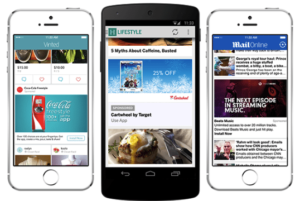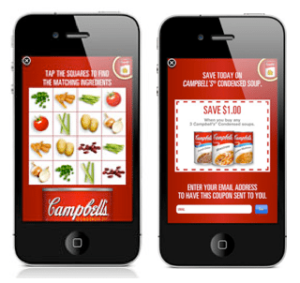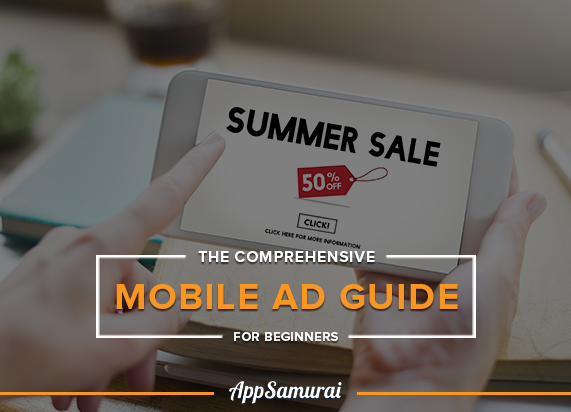Mobile app advertising is obviously among the digital marketing trends of the day. Mobile devices have been covering our life in alternative shapes such as phones, tablets, and watches. We use in-app services for shopping, gaming, business, and sports purposes or just for fun.
Accordingly, smart mobile advertising efforts are very effective tools to contact the target audience for companies. ‘Marketing wars’ are harsh and cruel today. A company falling behind the trends fades away from the market.
With this knowledge, companies with different scales make a large amount of investment in advertising efforts. They spent more than $100 billion on mobile ads in 2017. This amount is expected to increase year by year. And these companies should follow the trends in advertising to reach the audience in order not to waste the advertising budget, but to turn it into revenue.
We are here to provide you a handy mobile app advertising guide to strengthen your works in this area with this post.

Let’s start with the reason for our focus on mobile apps instead of mobile websites in particular.
Use App Samurai platform to increase your app installs via creating effective mobile advertising campaigns without dealing with any ad network. Click here to start for free.
Why Mobile Advertising?
Nowadays, companies tend to spend their digital advertising budget in the mobile world rather than traditional advertising. The increase in mobile advertising is undeniable among these digital advertising efforts. Actually, this is a pretty understandable shift considering the number of users who prefer to use mobile apps, but not mobile websites. And, this is not all.
Here are the basic reasons to invest in mobile advertising.

Users Spend More Time in Apps
Mobile advertising is more advantageous mainly because users spend more time in apps compared to mobile websites. In 2017, the time spent in-app increased by 6% according to Flurry’s research. Especially gamers, who can be the perfect target group for advertisers are spending more time than ever before.
Around 80% of the time spent on mobile devices is spared to mobile apps. So, why wouldn’t go for these users?
Mobile Devices Are Used by One Person
Mobile devices are usually personal belongings, which gives a more accurate insight into the user. So, mobile applications are also more solid in collecting data of the users such as gender, age, GPS location, and wireless carrier. Mobile apps let you find your prospective customer at the right time and in the right place.
Tracking User Behavior In-app Is Easier
The better you track the user behavior, the more efficiently you can set your target group. A successful tracking process helps you obtain realistic and detailed information about the user so that you can provide focused targeting. So you can take into consideration the user experience.
Mobile applications tie user identifications to the unique ID of every device. These IDs last for around 21 months, making the user data more permanent compared to mobile web cookies with a lifetime of 24 hours.
Mobile Ad Views Can Be Measured
If people never view or notice your ad, it cannot be effective by any means. Mobile apps offer a more useful and dynamic environment, making it easier to notice the ad campaign, which is good. But you also need to measure the statistics so that you can improve your advertising and change your path if necessary.
Mobile Websites vs Mobile Apps
We know mobile is the future. But we have to answer: Which one is better: Mobile Websites or Mobile Apps?
Mobile website:
- Gives you a chance to reach to a broader audience,
- More cost-effective,
- Mobile optimized sites are ranked higher, giving you brand visibility and SEO benefits.
Mobile app:
- Gives you more opportunities for branding,
- More personalization,
- You can leverage device capabilities for your benefit.

The next step in the mobile advertising guide is how to format your ad to get the highest interaction and conversion.
Let’s move on!
Alternative Formats of Mobile App Advertising
There is a wide range of advertising formats that allow advertisers to reach their audiences. When you choose the right mobile advertising format, you can discard the possibility of distraction and you can boost the engagement. So, think even more than twice before you decide.
Below are some of the most popular mobile advertising formats:
Mobile Video Advertising
Video advertisements can be regarded as one of the leading advertising formats. It shows a high influence on users. Mobile video advertising is considered as one of the most effective ways of increasing engagement rates and the revenue, especially if the videos are creative and appealing.
Videos may take more design effort; however, in the end, it pays the bill back with a 5 times higher engagement rate than banners.

Mobile Native Advertising
Shareable content is a gift! It is one of the most effective advertising tools as part of the word of mouth marketing. This is what mobile native advertising provides the advertiser. People perceive them as useful suggestions or fun ideas and volunteer to share your word.
Native ads are designed to seem a part of the app content, so it can be used on home pages, news feed, and search listings. This is a great format for being highly effective and non-disruptive.

Mobile Display Advertising
Display advertising constructs 20% of the advertisers’ total revenue. This format offers several different ways for the user to interact with the ad. For example, the ad can float, peel down, change shape. Finally, it manages to attract the attention of the audience. Advertisers now prefer to use more display ad on mobile apps as it generates high CTR and conversions.

Mobile Playable Advertising
Playable ads enable users to enjoy a game while engaging in your products or services. It is one of the most innovative ways to locate an ad campaign inside an app to increase your revenue. Because you display your call-to-action (CTA) to your audience right after establishing a bond with your offer, you have a better chance to end up with a higher conversion rate.

You need to consider your product or service while evaluating the options. You have look at our previous post on ad formats especially if you have a mobile game app.
Without a doubt, the right format needs to be used in the right way for a successful cycle that results in generating an income. This will be our next focus for our mobile advertising guide:
How To Succeed In Mobile App Advertising
Before and after choosing the most convenient format for your mobile app advertising, you have to move in a very strategic way. Your mobile advertising can bring you extremely efficient results if it is planned well. So, what does well-planned mobile advertising look like?
Successful mobile advertising requires meticulous work such as accurately targeting users, correctly app choosing, correct format, and size, perfect ad placement, etc. The audience you expect to reach should be classified in detail to determine ‘where’ and ‘how’ to reach them so that your ad can be offered only to related users. So you waste no money and no time.
Targeting efforts sort out the overall process by boosting the conversion, which is the demanded result of advertising.
Know your budget for the mobile advertising campaign. There are different kinds of content to advertise your product or service in mobile apps. Each has unique advantages and disadvantages. In case when you determine or learn your budget before you start working on the campaign, you will draw a more efficient picture of what you have.
Let’s say you want to go to Thailand for a dream vacation with a limited budget. If you spend all the money on a flight in business class, you will not get what you expect from this vacation. Especially if you are an entrepreneur, you may come across an event you never expected.
And learn successful practices by learning from case studies. Mobile App Success Stories: Starbucks App | Paper.io 2 | Kahoot!
Take each step with caution and be brave whenever you have confidence and knowledge!
Contact us if you need anything about mobile advertising and creating a mobile ad campaign.



